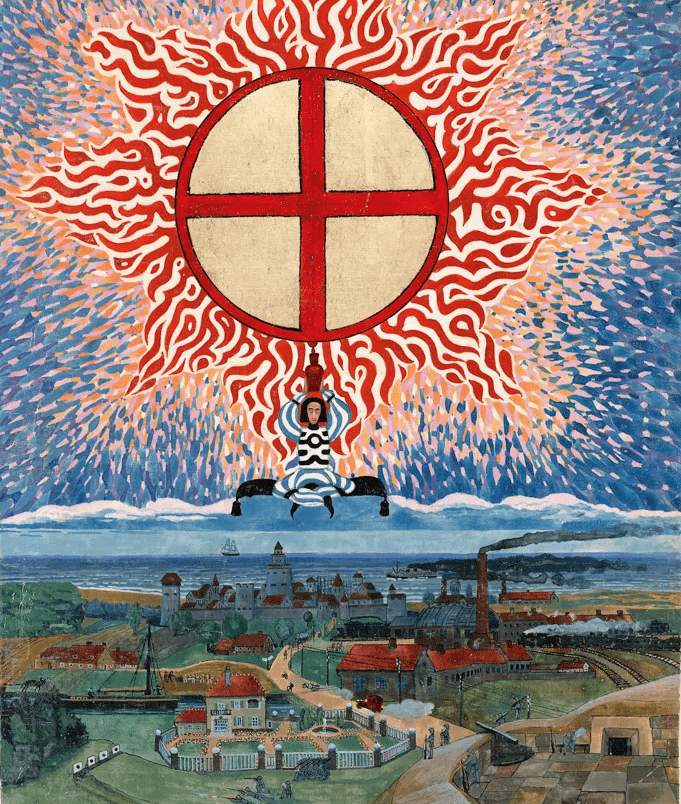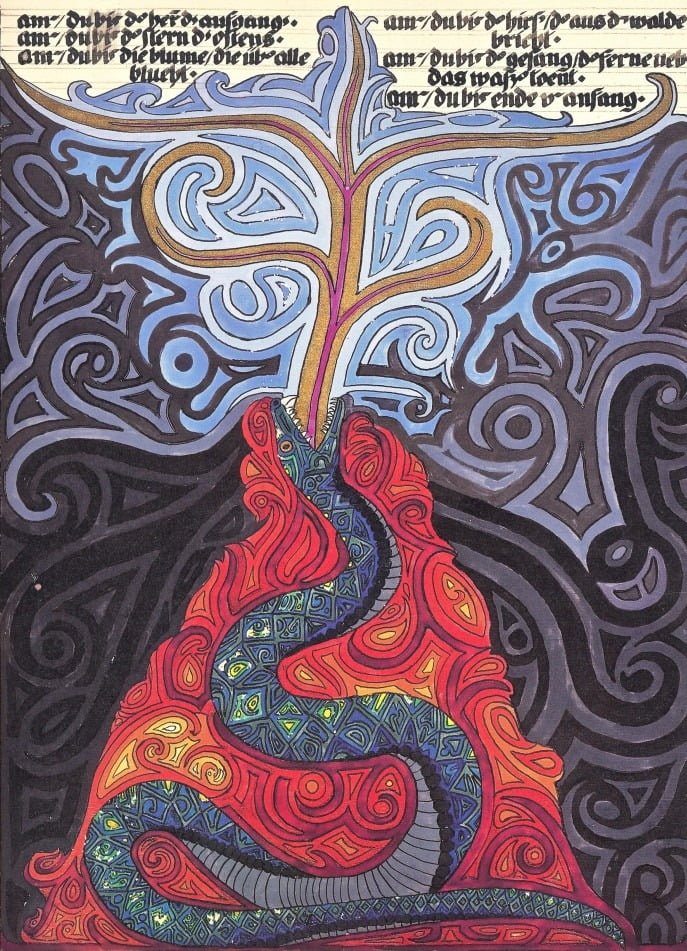Carl Jung and Art
Generally, artists are quite reserved when their artworks and the creative processes that lead to them are analyzed with the tools of exact sciences, especially psychology and, more specifically, psychoanalysis. They believe, and rightly so, that there is a risk that what is essentially unanalyzable may be explained simplistically and reductionistically, through the framework of theories that are often still speculative.
For instance, this is what happened with the interpretation of artistic activity from the perspective of classical Freudian psychoanalysis. According to this view, art is born out of a process of “sublimation,” which occurs when the sexual instinct is repressed and “buried” in the unconscious. As a result of this repression, the artist seeks to express their erotic impulses through art, making art just a masked form of giving voice to sexual frustrations. It is certainly not a very flattering vision for either the artist or their works, and the initial distrust is understandable.
However, when it comes to Carl Jung, artists are more than welcoming, and many have fully embraced his theories and vision of art—especially those in the field of art therapy. Why is this? To answer this question, we need to first explore some of the key concepts of Jungian thought and see how they relate to art and the artistic product.
The Collective Unconscious – Archetypes
Unlike Freud, Jung believed that in addition to the personal unconscious, which contains the psychic material of an individual, there is also a collective unconscious present in each of us. This collective unconscious contains primordial structures and forms common to all humanity. These structures, which Jung called archetypes, influence the way people perceive and interpret the world, being the result of ancestral and primordial experiences incorporated into the human psyche and transmitted genetically. Archetypes manifest in myths, religions, dreams, and, not least, in art. Jung believed that great artists, those who create works of universal value, primarily draw on elements from the collective unconscious—archetypes—rather than those from the personal unconscious.
Art and Symbols
For Jung, symbols are projections of unconscious psychic contents, and art is primarily a symbolic reality. The artist gives an aesthetic form to these symbols, making visible what is essentially invisible and unconscious. However, this does not mean that what an artist creates is perfectly intelligible and can be fully exhausted through intellectual analysis. True art must retain something indescribable, something that sometimes shakes us, that makes us ponder—without knowing exactly what we are thinking about. True art always has something alive, fascinating, and incomprehensible. The artistic symbol encapsulates these qualities, its purpose being to bring archetypal psychic realities to the surface.
The Function of the Collective Unconscious and the Purpose of Art
Jung considered the most important characteristic of the collective unconscious to be its compensatory function. The compensatory function is the mechanism by which the unconscious attempts to balance a personality that develops unilaterally, neglecting other dimensions of itself. This compensatory function can manifest in dreams, psychosomatic symptoms, and irrational behaviors.
Art, in turn, can serve this compensatory function, but on a social level rather than an individual one. Authentic art seeks to offer solutions for the spiritual maladies specific to each era, which is why it is sometimes so difficult to judge the value of a work of art outside the context of the time in which it was produced. It addresses the psyche and sensibilities of the people of those times.
Carl Jung – Artist or Art Therapist?
Jung formed his vision of art not only by contemplating the creations of others but also by being a creator himself. The images in this article are all produced by him and are found as illustrations in the “Red Book,” a work he began writing in 1914 following a spiritual crisis. Jung was besieged by various fantasies and hallucinations, even fearing he was on the verge of becoming psychotic. However, he realized that by writing, drawing, or painting, giving form to this psychic material, the effect was therapeutic. Moreover, Jung encouraged his patients to express themselves artistically in various ways, believing that the therapeutic value lay in the process itself, not necessarily in the final product.
Why Artists Love Carl Jung
Now we can return to the question we posed at the beginning of this article: why are artists more than lenient with Jung’s theories about art? They are so because, first and foremost, Jung understood the essential role that art plays in society and did not seek to confine it within reductionist explanations. Jung believed in the existence of an autonomous artistic instinct, an essential need to express what is alive and deep within each person’s soul. The artist “descends” into the depths of the collective unconscious and brings to the surface what is necessary to maintain our psychological balance and vitality. Once created, a work of art takes on a life of its own, independent of its creator.
From Jung’s psychology blows a wind of freedom, an openness to everything that involves the spirit and its manifestations in the world, so it is no wonder why artists love Carl Jung.







